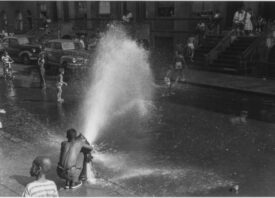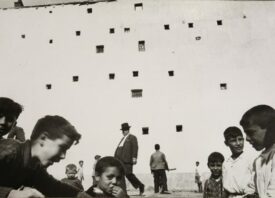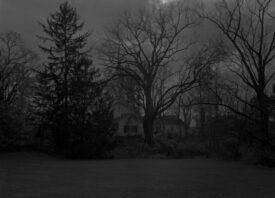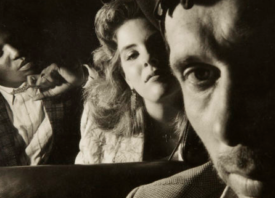Search this site
Black Photographers Who Made History, from the 1920s to Today

James Van Der Zee captures the beauty and genius of the Harlem Renaissance. Roy DeCarava collaborates with Langston Hughes. Gordon Parks documents the Civil Rights Movement. Dawoud Bey retraces the Underground Railroad. In this collection of articles, we revisit just a few pioneering Black photographers who made history and changed the industry—and a nation—in the process.

Harlem Through the Eyes of James Van Der Zee
James Van Der Zee starts off this spotlight on historic Black photographers in the United States: “Picture it: Harlem, 1918. James Van Der Zee, 32, opens Guarantee Photo Studio on 135 Street just as the Harlem Renaissance was coming into bloom during the first wave of the Great Migration.
“Van Der Zee set himself apart by using painted backdrops and luxurious props in the studio to create elaborate tableaux for his subjects, and bathed them in sumptuous lighting to evoke a painterly touch, imbuing each photograph with the hand of the artist.
“In the works of Van Der Zee, we can return to Black America as a powerhouse of culture, creativity, capital, and commerce fueled by the spirit of community and communion — of generations moving north in search of a better life and finding the magic that begins where Central Park ends.”

Celebrating Roy DeCarava and “The Sweet Flypaper of Life”
“‘We’ve had so many books about how bad life is, maybe it’s time to have one showing how good it is,’ Langston Hughes said of The Sweet Flypaper of Life, his landmark art book collaboration with Roy DeCarava republished by David Zwirner Books.
“In 1952, DeCarava became the first Black photographer to win a John Simon Guggenheim Memorial Fellowship. He used the one-year grant of $3,200 to make the photographs that would appear in the book, a tribute to Harlem glowing in the final years of its legendary Renaissance.”

Gordon Parks, the Civil Rights Movement, and the Pictures That Changed the World
As LIFE magazine’s first Black photojournalist, Gordon Parks spent years documenting the Civil Rights Movement and the unseen, sometimes deeply private, moments that unfolded behind the scenes. He was allowed access to Martin Luther King’s ‘I Have A Dream’ speech as it echoed from the entrance of the Lincoln Memorial and throughout a crowd of 250,000.
He met Muhammad Ali, and as the only Black photographer on staff, he was permitted singular access to the Nation of Islam. He was dear friends with Ralph Ellison, who published Invisible Man two years before the official start of the Civil Rights Movement.
Martin Luther King had non-violence, Malcolm X any means necessary. Ali had his might, and Ellison his pen. Gordon Parks had his camera, which for him was as powerful a tool as any.

Dawoud Bey’s Powerful Portrait of Black America Over Half a Century
Next up in our spotlight on Black photographers throughout history is Dawoud Bey: “In 1975, Dawoud Bey embarked on his first major body of work, Harlem USA, a series of black and white street photographs and portraits made documenting the community during the mid-late 1970s. He debuted the work in 1979 at the Studio Museum in Harlem, showing just 25 images from a seminal series, finally showing it in full in 2012 at the Art Institute of Chicago.
“In the intervening decades, Bey has amassed a majestic oeuvre that weaves together a wide array of styles, techniques, and genres into a glorious tapestry that captures the breathtaking depth, intricate nuances and limitless complexities of Black life in America over the past half-century. In Two American Projects, the book from Yale University Press, Bey charts a new map of the past, using photography as a means to explore histories told and untold in a new light.”

Celebrating the Powerful Legacy of Black-Owned Publishing
“In 1942, businessman John J. Johnson founded the Johnson Publishing Company in Chicago, premiering its flagship publication, Ebony, three years later. In 1951, Jet, a weekly digest, debuted. Together, Ebony and Jet created the defining image of Black America during the tumultuous years of the twentieth century, creating a space wholly for itself that drew a loyal audience excited to catch the latest in the glossies.
“In 2016, Johnson sold both magazines, marking the end of an era. In celebration, Fondazione Prada presented The Black Image Corporation in 2019, a project conceived by African-American artist Theaster Gates.” To continue our exploration of Black photographers throughout history, we revisit the stunning exhibition.
Read this next: A Trailblazing Photography Collector Champions Black Artists



